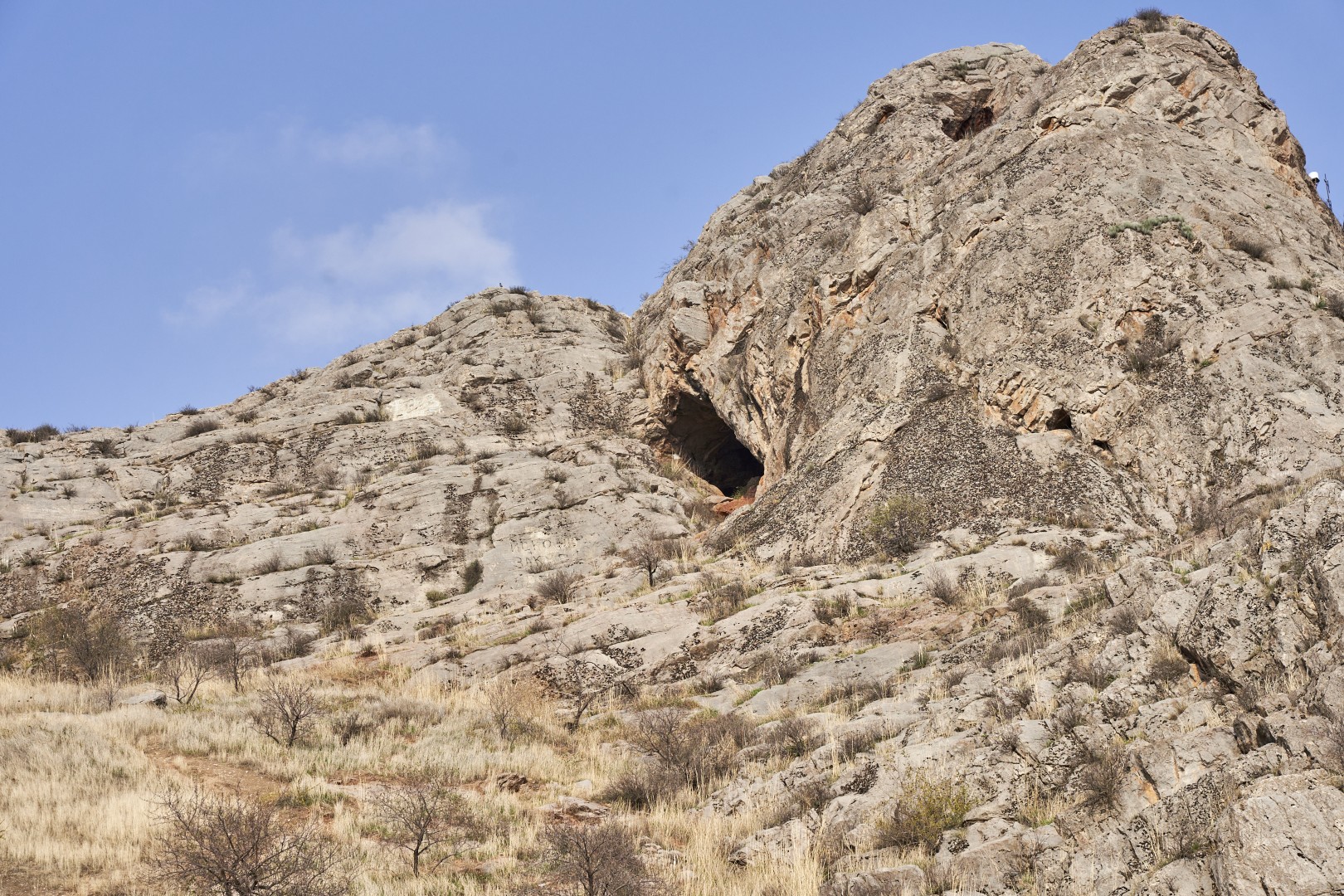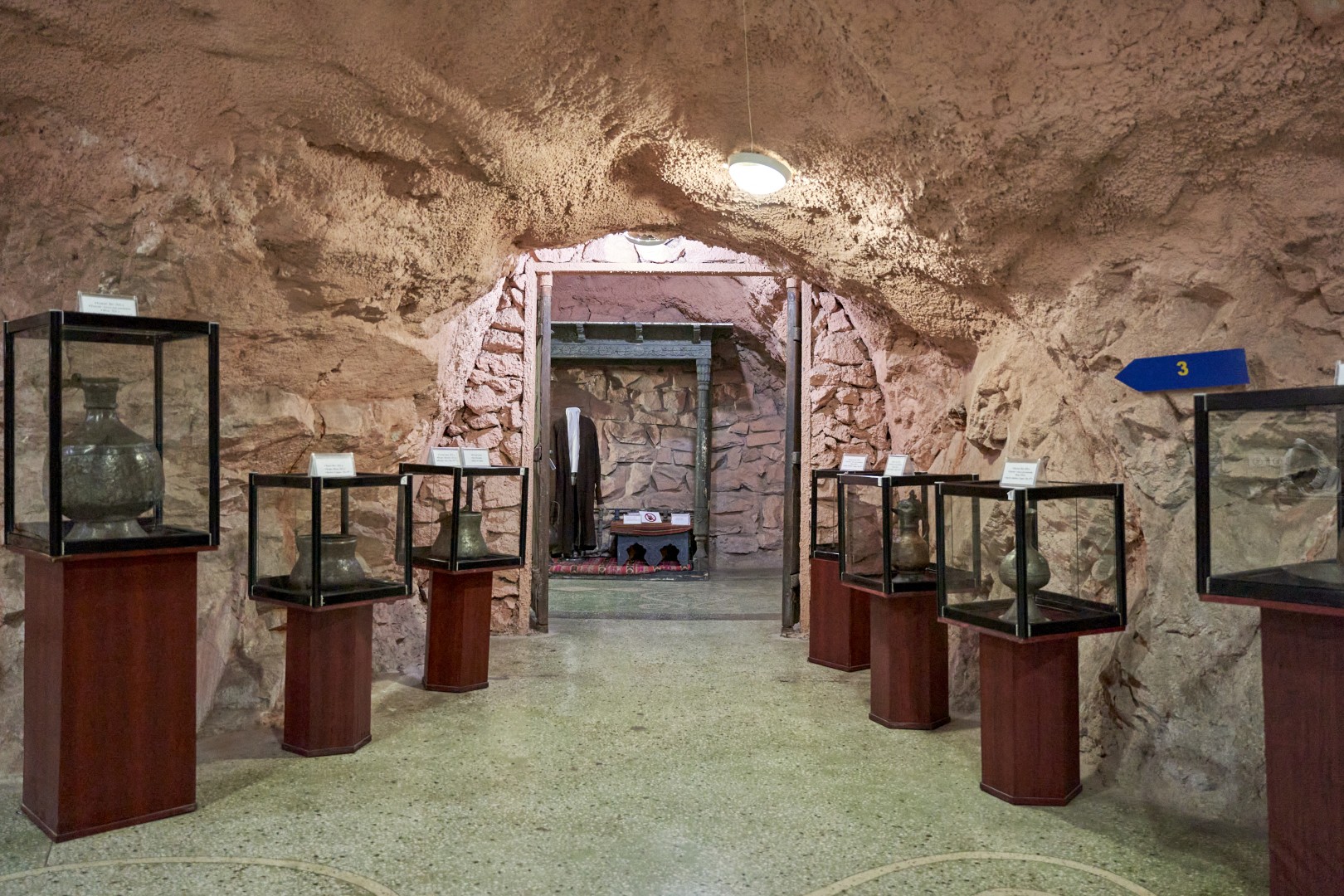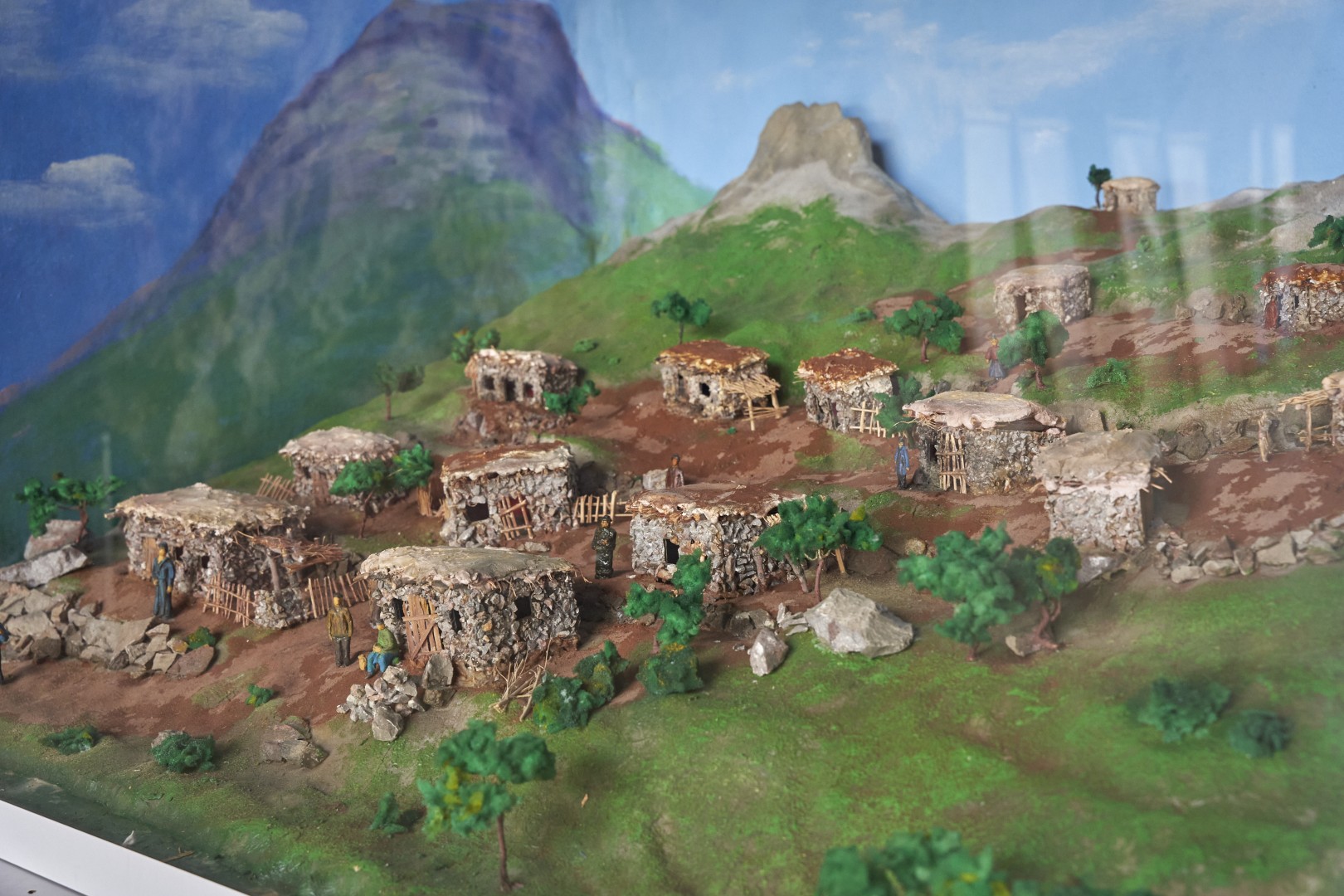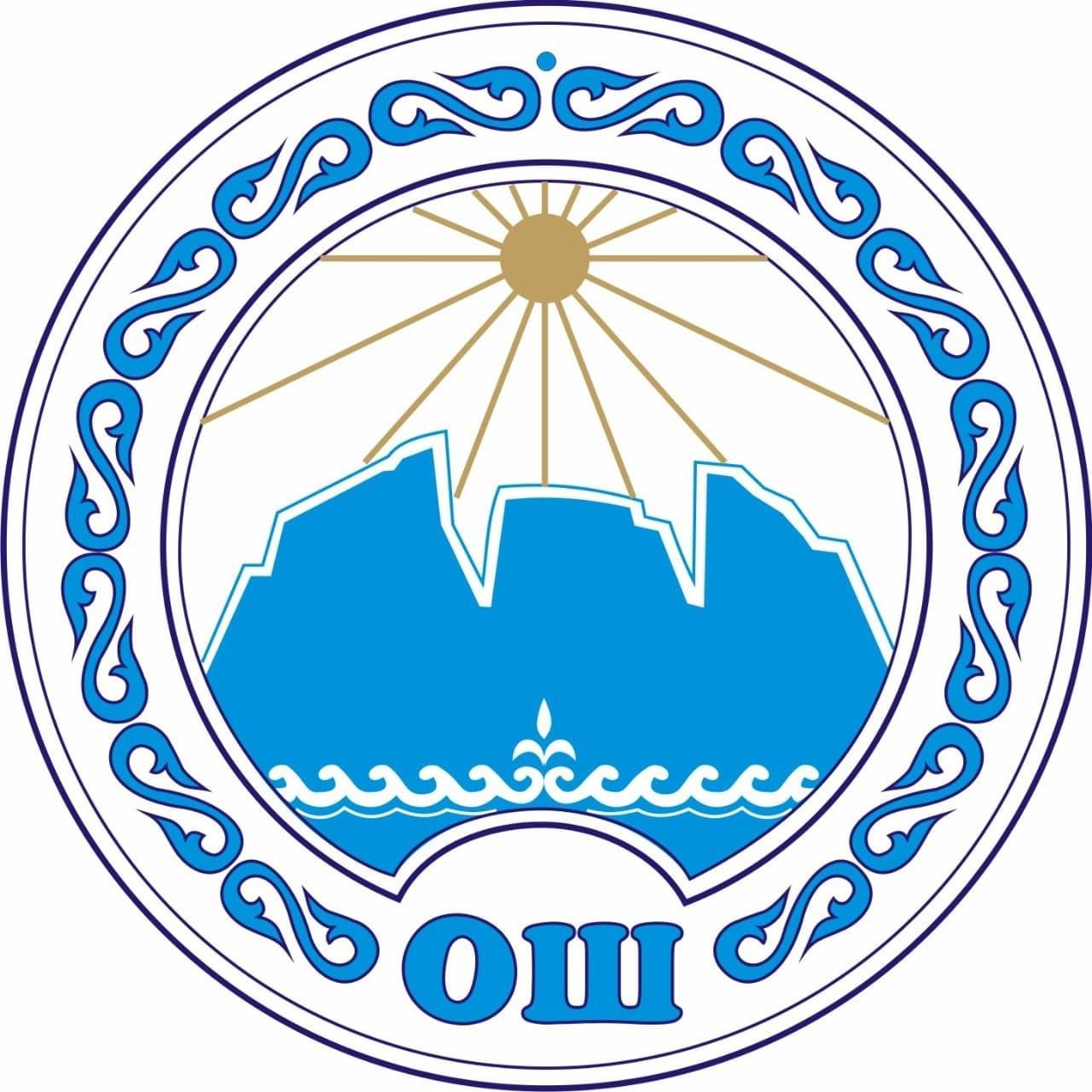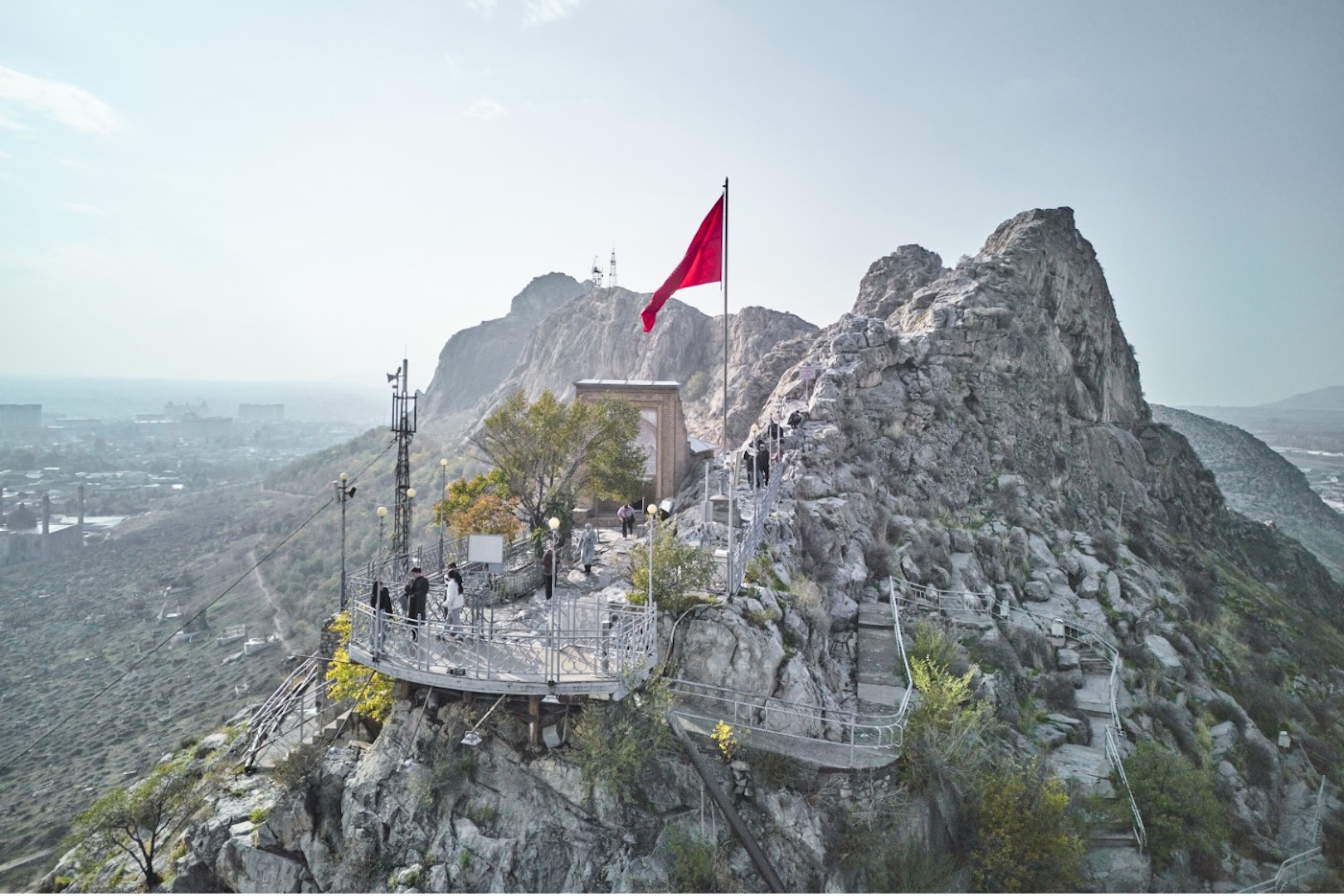
Suleiman Mountain
Welcome to Suleiman Mountain! Suleiman Mountain is the central landmark of Osh. Whichever side of the city you enter from, you see its distinctive outline proudly rising about the historical centre.
It was here at the foot of Suleiman Mountain that the ancient city of Osh was born. On the terraces of the southern slope of the mountain, archaeologists have found irrefutable evidence of the existence of the Osh settlement of the Chust culture, dating back to the late 2nd and early 1st millennium B.C.
The khanates and empires have changed, rulers have come and gone, but Suleiman’s mountain has never lost its significance and sacredness, remaining a landmark for many generations.
Here is an interesting fact: prior to the 16th century, the mountain was called Bara Kukh, “the beautiful mountain” in Persian, with the name Suleiman Mountain being given later. Despite this, the mountain was inseparably linked to the name of the biblical king Suleiman (Solomon) throughout history through legend and lore. The chronicles of the 19th and 20th centuries also call it “Takht-e Soleymān”, meaning “Suleiman’s Throne”. It rises above the city much like a throne, as if looking over and guarding the south-eastern outskirts of the Fergana Valley.
Locations of the Tour
- Rock CarvingsPetroglyphs, visual remnants of Osh’s millennia-old history, can be found almost everywhere on Suleiman Mountain. They are most numerous on the southern, eastern, southeastern and southwestern slopes of all five peaks. Some of them are located in accessible areas, others in caves and grottoes. According to a conservative estimate, there are about 400 rock carvings scattered across the mountain.
- Hujra of Babur, the Founder of the Mughal EmpireThe most famous historical monument on Suleiman Mountain is the hujra of Zahīr ud-Dīn Muhammad Babur, the founder of the Mughal Empire in the Hindustan Peninsula. In Islamic tradition, a hujra is a small cell or room in a madrasah where pilgrims prayed and rested.
- Peaks and Caves of Suleiman MountainSuleiman Mountain is a five-headed limestone remnant that measures 1140 meters long by 569 meters wide, located at an altitude of over 1000 meters above sea level in the southeastern part of the Fergana Valley, in the historic center of Osh.
- Museum in Rushan CaveOn a hot July day in 1978, the new Historical and Local History Museum of Osh, housed within a winding complex of 13 caves and with an exhibition area of 752 square metres, was opened on Suleiman Mountain!
- The beginning: Osh settlementIn 1967, Elena Druzhinina, the Head of the Pre-Soviet History Department of the Osh Regional Local History Museum, found fragments of ceramics identical in origin and decoration to those of the Chust culture on the southern slope of Suleiman Mountain. This archaeological find marks the beginning of the 3,000-year-old history of Osh. At the time, however, the historian was unaware of the full scale of her find.
- Gate of Fire at Suleiman MountainAncient Osh with its majestic Suleiman Mountain has a magic power, attracting adherents of various religions and beliefs, serving as a place of pilgrimage for dervishes and wandering believers of many faiths.

Other Locations
-
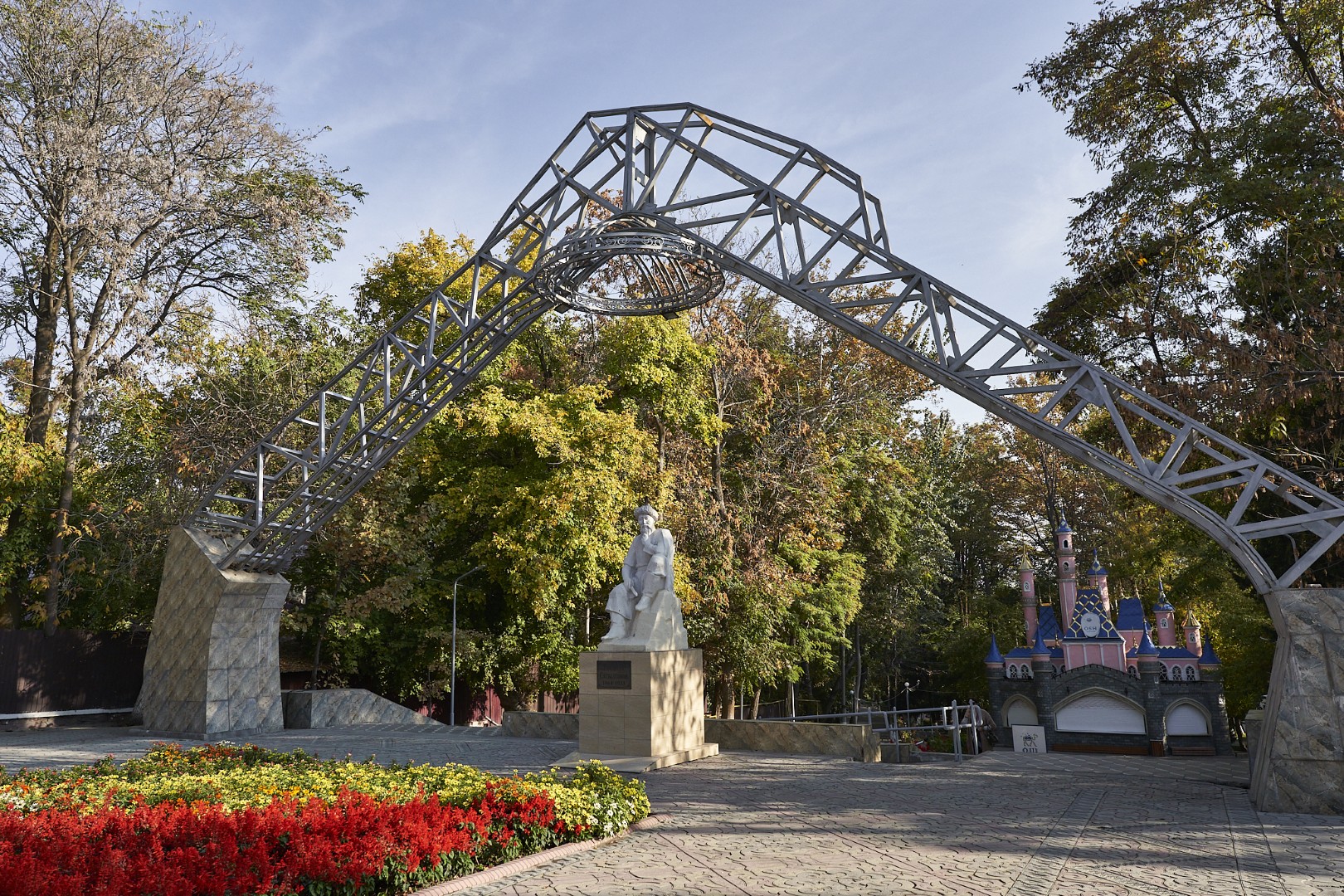
Toktogul Park
One of the oldest city parks in Osh, Toktogul Park was founded in 1878 as the city garden of the Governor-General. During the same period,…
-
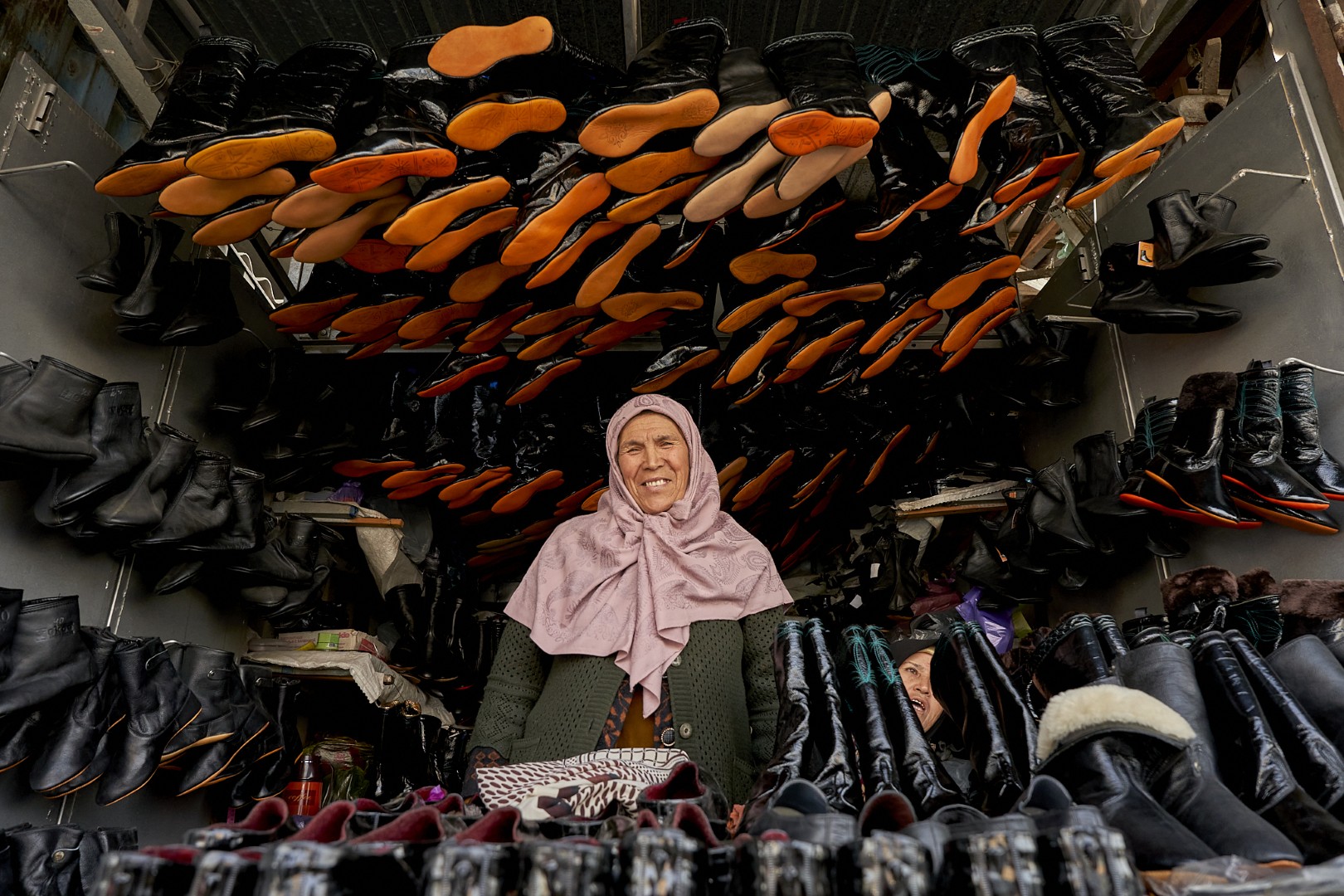
Teshik-Tash
Teshik-Tash is one of the oldest and most colorful passageways to the bazaar, dating back to ancient times. Long ago, it was the most common…
-

Rabat Abdullah Khan Mosque
Rabat Abdullah Khan Mosque, a historical and architectural monument of the Shaybanid era, is located at the northern foot of the Suleiman Mountain.
-
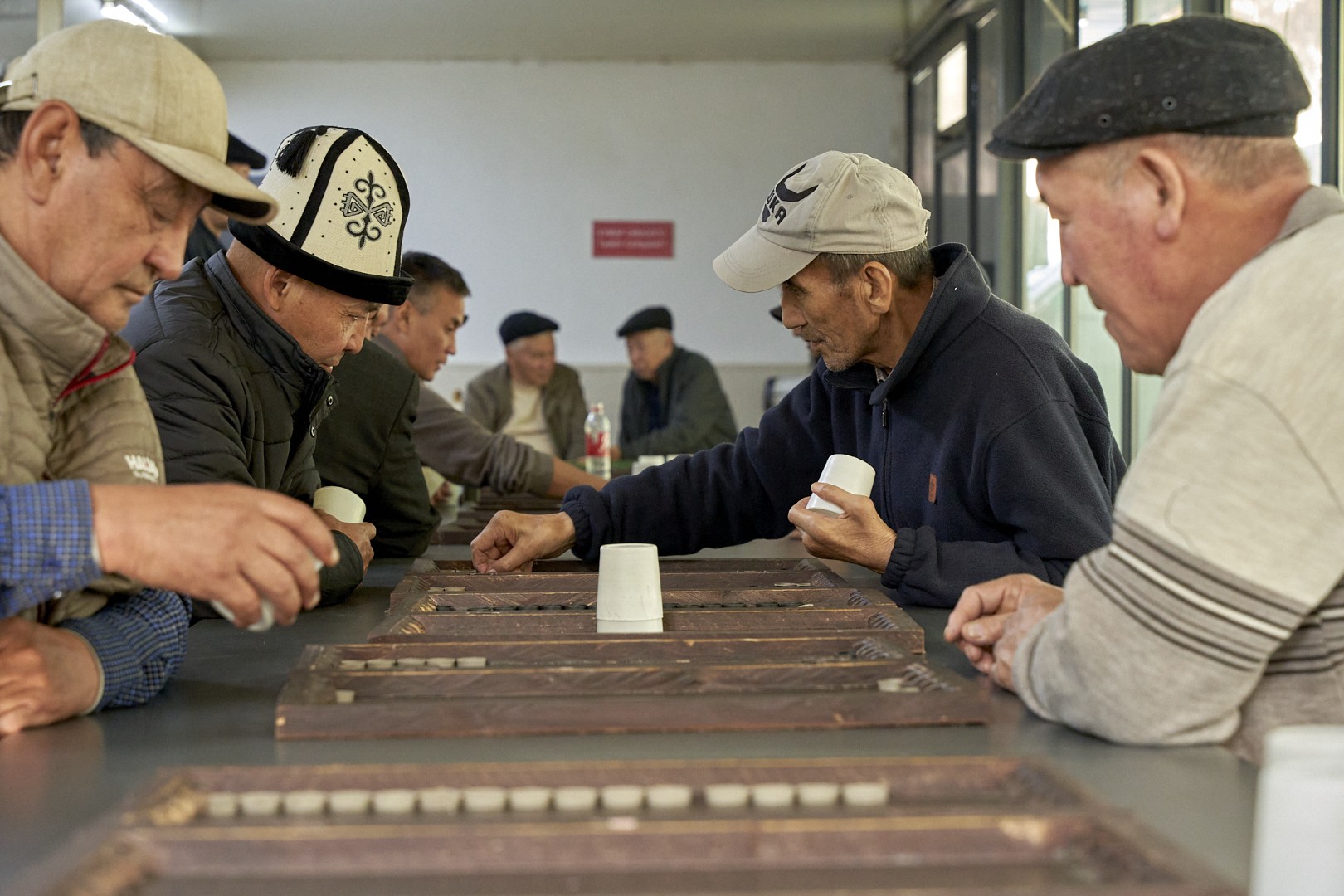
Diversity
Start your leisurely stroll through the old bazaar with a piala, the traditional teacup, of fragrant green tea. Stop by one of the local teahouses…
-

Original Samsa is in Osh!
Together with pilau, samsa is one of the five culinary staples of Osh. It is difficult to imagine Osh cuisine without it. Unlike the samsa…
-
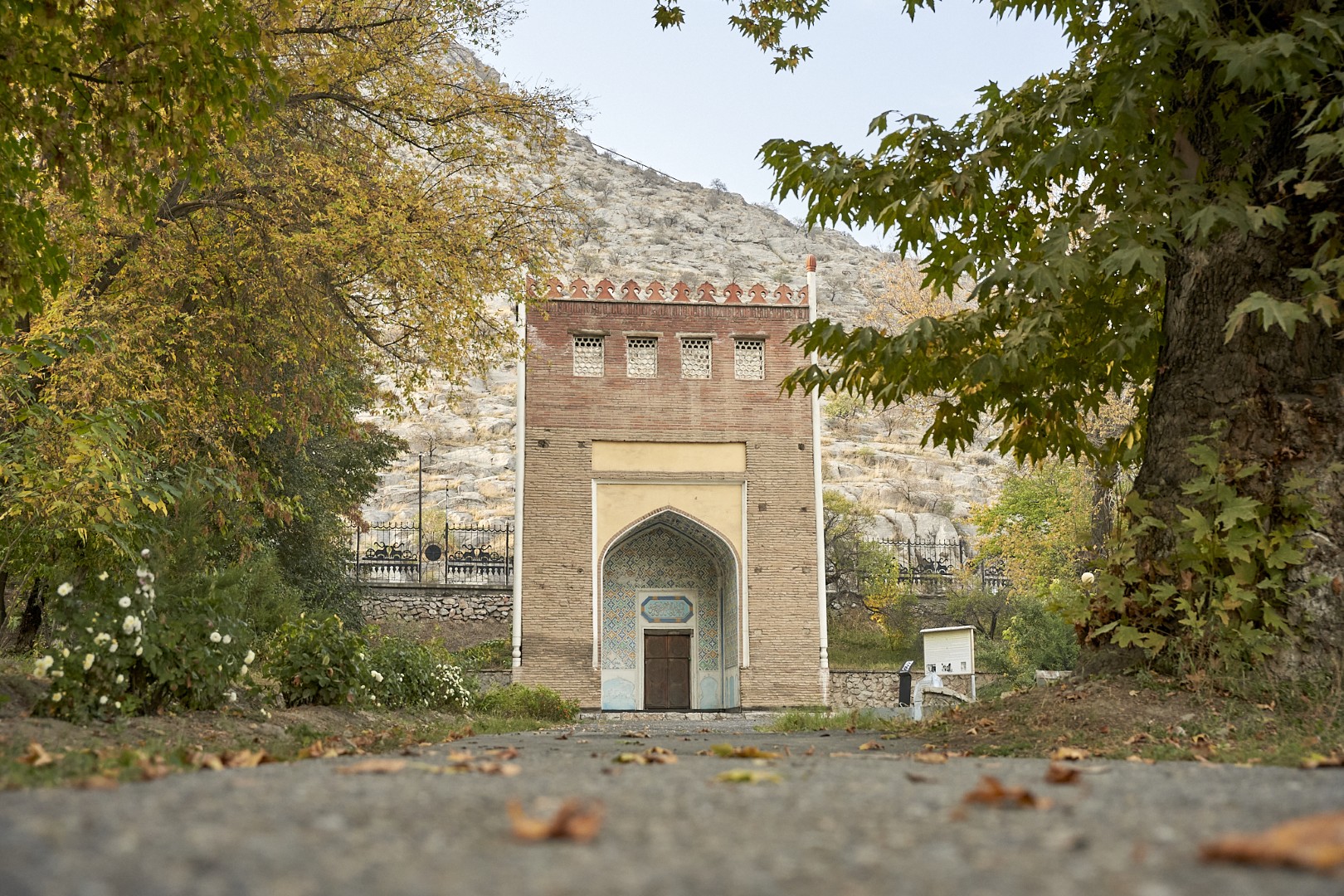
Asaf Ibn Burhia
Asaf ibn Burhia Mausoleum is located on the southeastern slope of Suleiman Mountain, and was built in the 18th century in the traditions of the…
-

Blacksmiths’ Row
The blacksmiths’ row is situated on the bank of the Ak-Buura, in the most colourful part of the old bazaar, as it has been for…
-
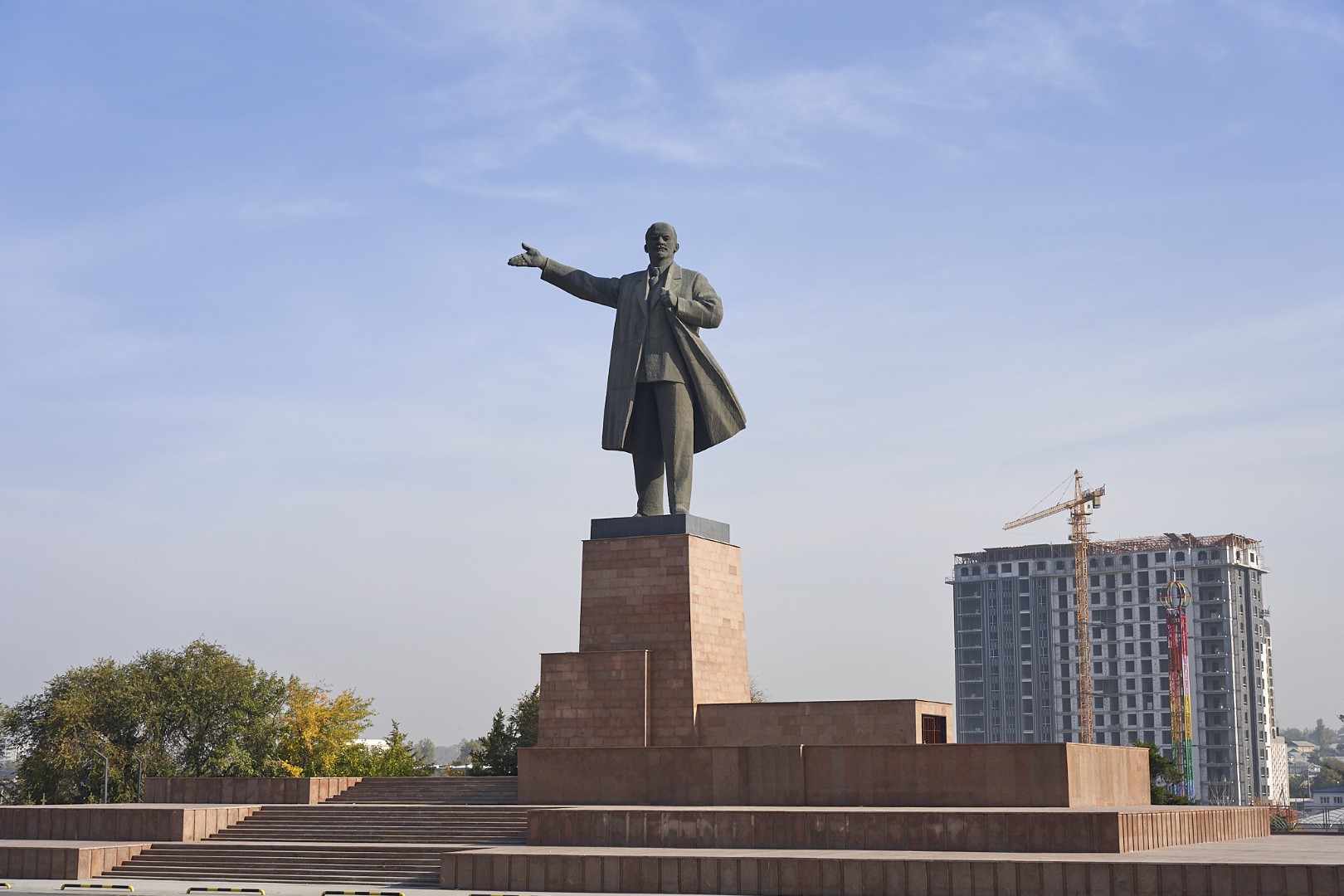
Monuments as symbols of changing eras
An imposing monument to Communist leader Vladimir Lenin, erected in May 1985, still stands in Osh’s central square. The statue itself is 11 metres high…


